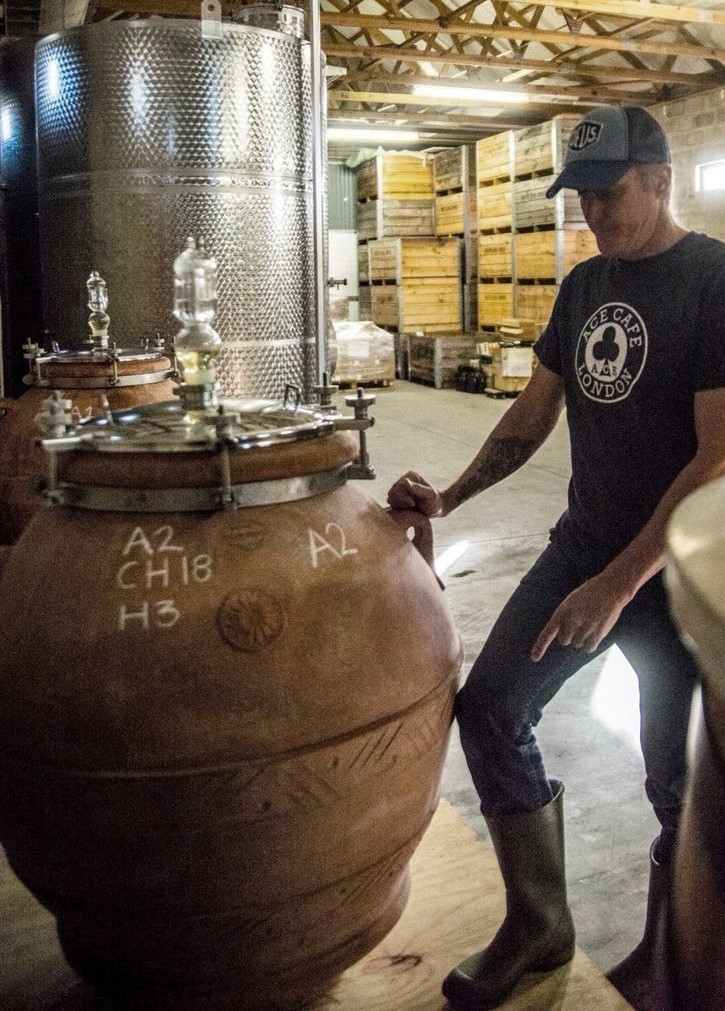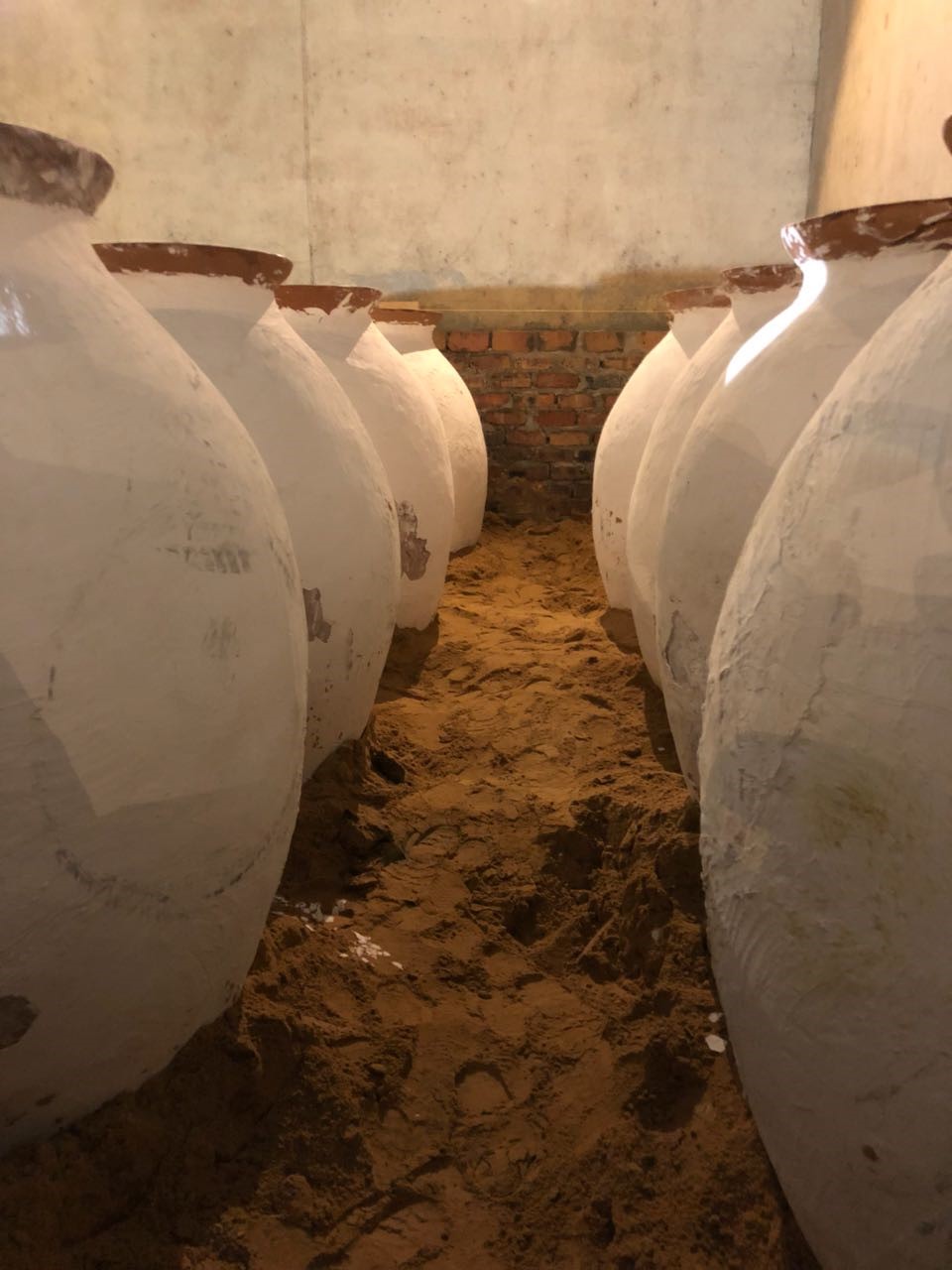Beyond Fruit
Consumers love to taste fruit in wines; it instils confidence in the authenticity of the variety/ties on the label. Winemakers and yeast producers have gone to great lengths to ensure the grape’s fruit is enhanced in the wine, usually aided by cold fermentation in stainless steel. Delicious young, the wines are often one-dimensional, that joyous fruit soon fading.
Ideas and wine never stand still. Today, joyous fruit is yielding to wines with texture, flavour and greater dimension.
Peter-Allan Finlayson’s original idea of fermenting Sauvignon Blanc in a Yogi de Beer clay amphora was to add a textural component to Gabrielskloof Magdalena blend with Semillon; the end result so excited him, the wine was bottled alone under the Amphora name. ‘The amphora is unlined so porous, meaning there’s some micro-oxidation, less than new oak, more than stainless steel,’ Peter-Allan explains. The lees staying in suspension for longer than other vessels also influence texture, something he believes is relevant in our warmer climate as this and tannin can add freshness and vigour.
Craig Wessels of Restless River has a simple philosophy to the single vineyard, Ava Marie chardonnay: each vintage should be a true expression of this vineyard … texture plays a key role in this, as does clay. Around 10-15% of Ava Marie is fermented and matured in 450L terracotta amphora, hand made from Tuscan Galestro clay. Craig describes the oval shape as contributing ‘positively to textural qualities derived from lees and their natural circulation during fermentation, as well as micro-oxygenation during ageing; both build a fuller, more dense mid-palate texture.’ Oak, mostly older up to 10 years, is used for the balance of the wine. ‘It brings an array of magnificent textures and subtle flavours, while still respecting the site’ Craig concludes.
Recently introduced to South Africa is the qvevri, a fermentation vessel originating in Georgia. Varying in size from 650L to over 1000L, the qvevri are made from clay sourced in central Georgia and, due to their tapered shape, are unable to stand alone, so are buried in the ground, with just the neck showing. Avondale was the first to import these and winemaker, Corné Marais spontaneously ferments, wholebunch whites and reds in them with daily punchdowns; post-fermentation the wine is twice pressed, first off skins, then stems, the wine remaining in the qvevri until next harvest. Corné describes the resulting wine as bright, balanced with great minerality, the tannins rendered part of the wine thanks to oxygen entering the qvevri. With such lengthy time on the skins, it is in effect an orange wine. Wine is made in a similar way in Avondale’s 550L-600L amphora, some of the clay used in their construction coming from the farm, which owner, Johnathan Grieve, believes further fuses a sense of place in the wines.
A portion of qvevri and amphora wine introduced into the Anima Chenin Blanc and Cyclus adds subtle textural dimension to the flavours.
The first 2016 Reyneke Natural Chenin Blanc was spontaneously vinified in seasoned oak; not liking the wine’s breadth after malo-lactic, cellarmaster Rudiger Gretschel sourced a French amphora for the next vintage, a vessel he finds leaves the wine more linear, tighter and with greater freshness.
While fruit might be less apparent, vinification in this range of vessels provides multi-dimensional wines, flavoursome rather than fruity and with the possibility of beneficial ageing.


- Blog by Angela Lloyd